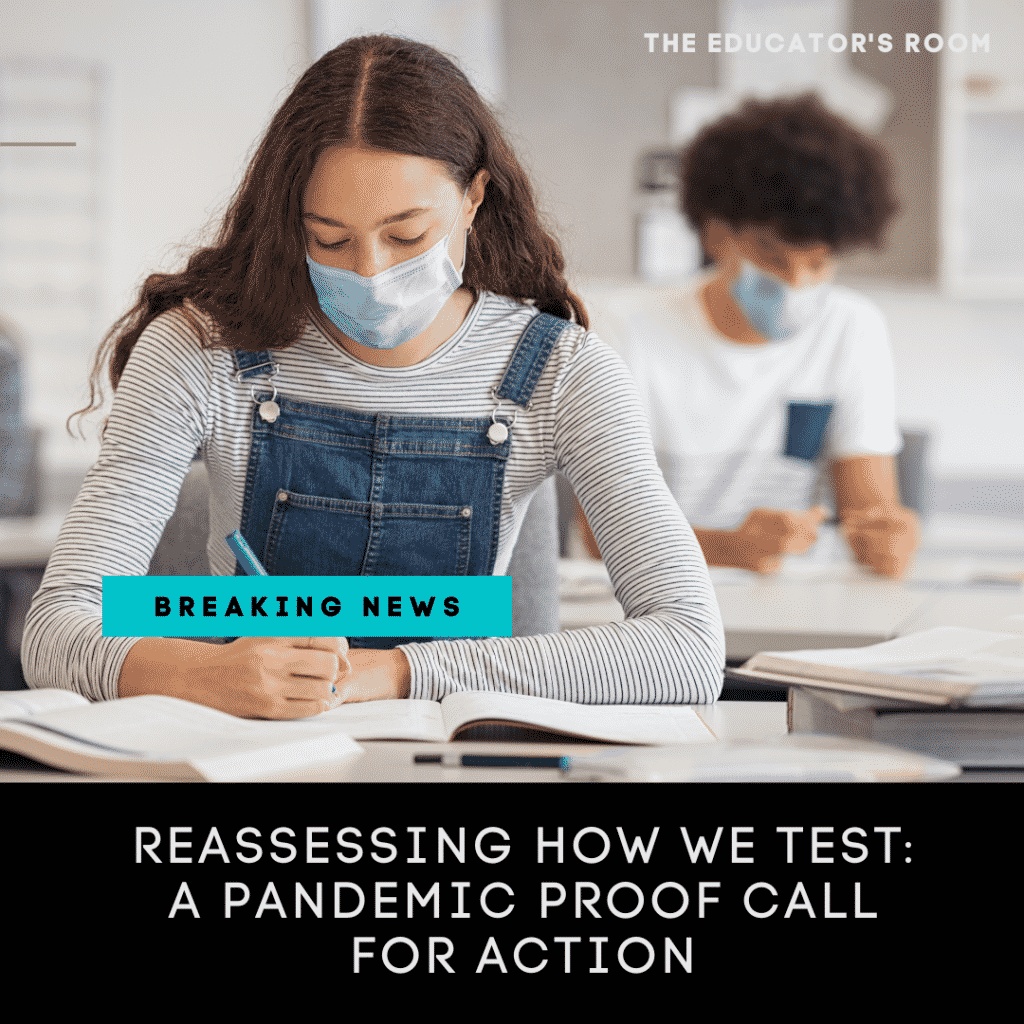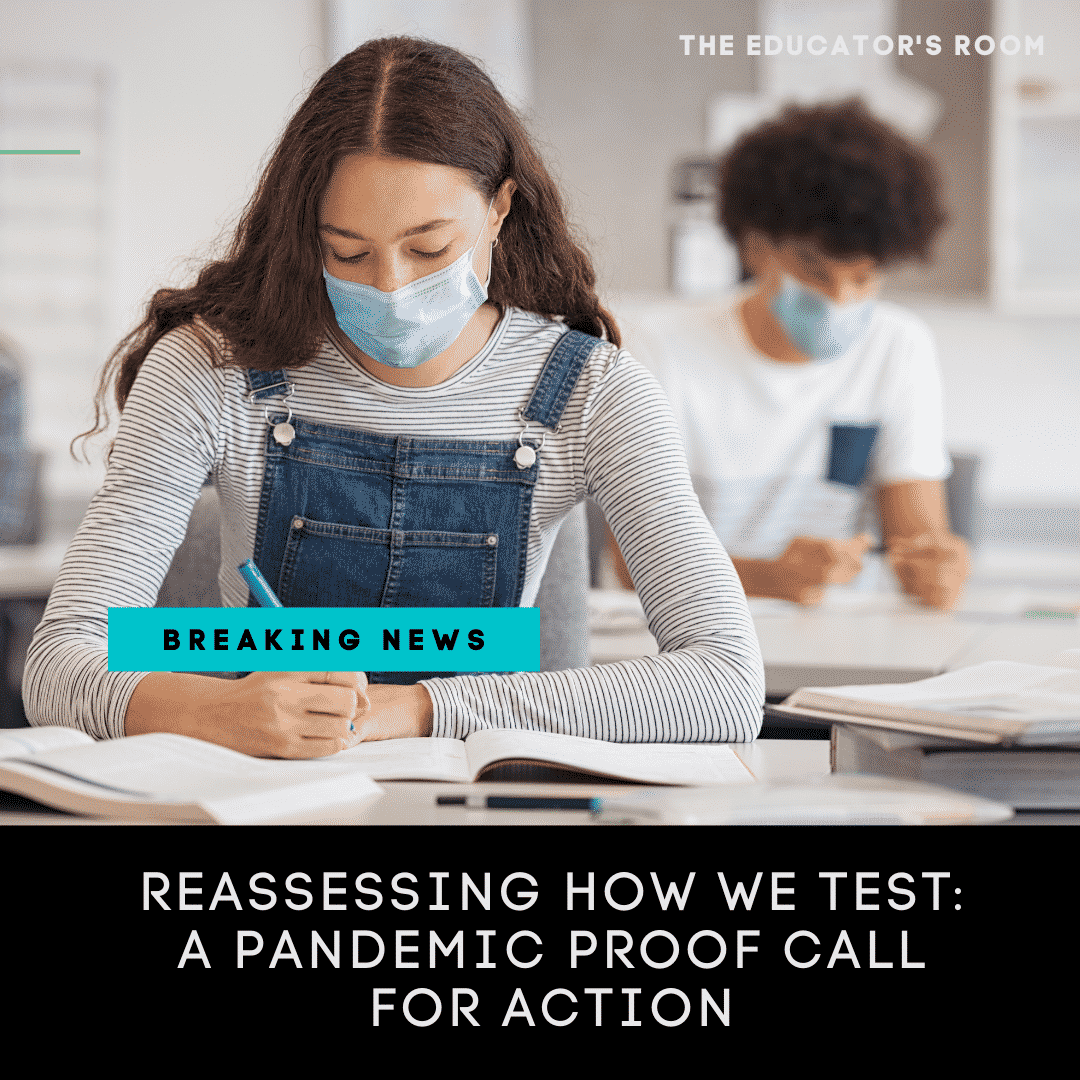“Will this test even count?” One of my students unmuted briefly on Zoom to ask about the impending end-of-year state assessments. A normally reticent child who preferred clicking his responses away in the chatbox, spoke up confidently now as if on behalf of the whole class. I stammered my way through a response that sounded like “most likely”, though I had no clue then how exactly their work would be assessed at the end of the year, considering the new difficulties presented by remote and hybrid learning (many districts struggled with the logistics of this question—as the Biden administration announced it would not cancel federally mandated standardized exams in the 2020-201 school year); nor could I explain, with any level of authority, the assessment’s true significance in a year when a global pandemic had so shifted priorities for students, parents, and teachers alike.
I urged them to take it seriously.
And to keep giving the test your best.
Reminding them that the data would be especially useful to their teachers next year.
Simply saying “no” or “it counts, but not in the way it has in previous years” would have taken the last gust of wind from their sails at a time in the school year when currents of excitement are already low; students sensed the end is near.
Perhaps, they would have wondered, what was it all for? —the reading assignments, the group discussions, the drafts of essays. Why continue working hard now? I, like many other teachers across the country, awaited direction from school administrators on what exactly to tell students and families, though it was quite clear that this was a school year like no other and would require a full reassessment of summative testing.
Facing the Facts
Alas, any confusion about how assessments would take place in the 2020-2021 school year soon became clear. Ultimately, the US Department of Education allowed states to administer shorter versions of their state exams. States were also given the option to administer their assessments in the summer or into the Fall of the 2021 -2022 school year. And aside from adjusting timetables, states could also request a waiver of the accountability and school identification requirements, ultimately changing the way results were reported.
In a letter previously issued by the Department of Education Office, Ian Rosenblum writes about the need for time-sensitive measures. “State assessment and accountability systems play an important role in advancing educational equity. At the same time, it is clear that the pandemic requires significant flexibility…so that states can respond to the unique circumstances they are facing.”
An emphasis on flexibility saved the day. The changing social, political, and cultural landscape called for it. Now, as we move forward in a school year rife with concerns about the prevalence and transmission of the variant spread of COVID 19 and a confluence of opinions on how best to return to a place of normalcy (particularly regarding social and emotional health) schools face reoccurring challenges.
Big Questions
What should summative assessments look like during an ever-evolving pandemic? Considering the requirements for quarantined students, disparities with in-home learning, a diminishing teaching cohort, and the general readjustment needed for students and teachers to an in-person learning environment, some of the same concerns regarding equity and flexibility were first discussed at the start of the pandemic, remain.
Schools must again ask: How can we make assessments count? How do we address expanding opportunity gaps between advantaged and disadvantaged students, particularly when analyzing data? Will we have to approach summative assessments in a new way?
Obvious Barriers
We can’t discuss the future of testing student achievement during the pandemic without first acknowledging the obvious barriers now keeping students from experiencing an optimal learning environment. Too much time away from the classroom opens a whole can of worms for educators and students. Of course, this time away is often necessary, if not required, for public health purposes. And teachers across the country have done their best to utilize every resource at their disposal to make the most of remote and hybrid learning for students. However, research done by the Collaborative for Student Growth shows the impact of school closures on student achievement.
“Projections suggest major academic impacts from COVID closures for students, especially in mathematics.” –a trend described as the “COVID Slide.”
The learning loss that occurs for a student over an extended time away from the classroom (much like what is often observed when students return from summer break) has ultimately affected how they perform on summative tests.
According to the Economic Policy Institute, “Compounding all of the barriers to meaningful and equitable monitoring and testing during the pandemic, teachers in remote settings lack the tools that they have when they are in their classrooms to interpret test results. In other words, in a classroom, teachers are more able to distinguish between a low score likely due to the student’s lack of understanding of the material versus a low score due to the student’s frequent absences, emotional distress, or other factors. As a result, teachers working remotely are hard-pressed to respond to a test score with an appropriate strategy to support the student.”
Yes, school closures have impacted learning loss. This isn’t breaking news to most teachers. Many of us, particularly those who serve in low-income neighborhoods, have watched our students fall behind, most times for reasons that were beyond their control. Students who have access to adequate resources and consistent internet access are more likely to succeed with online learning. Those without, tend to fall behind widening the opportunity gap between the advantaged and disadvantaged and ultimately making it even more difficult to accurately test student achievement during the pandemic.
A Renewed Focus on Testing
The road ahead for assessments presents many challenges. But what are some possible action steps? How can teachers reassess our thinking about testing?
- Place greater emphasis on diagnostic tests, formative assessments, SEL assessments, project-based assessments, and capstone projects. (Economic Policy Institute)
- Keep families at the forefront. Providing access to engaging supplementary resources to support families, during and after school closures can help fill in the gap of learning loss that occurs during school closures. This will help yield better results for any type of testing in the future.
- Celebrate small victories. We often view end-of-year summative assessments as the ultimate barometer of success for both students and teachers. For many, they become an immense source of stress and do not always accurately reflect student learning—a problem that existed before the pandemic. Celebrating small milestones along the way will change how students experience assessments and provide teachers with the satisfaction of appreciating the fruits of their labor over time.
Though we are living through difficult times, educators can use this diversion from the norm to change our old way of thinking and implement new actions steps that will have positive, lasting effects on testing into the future.





